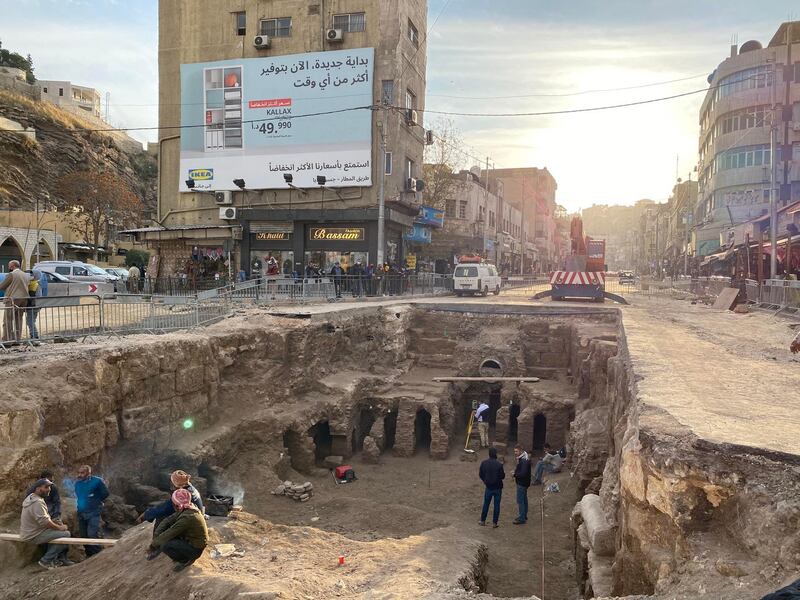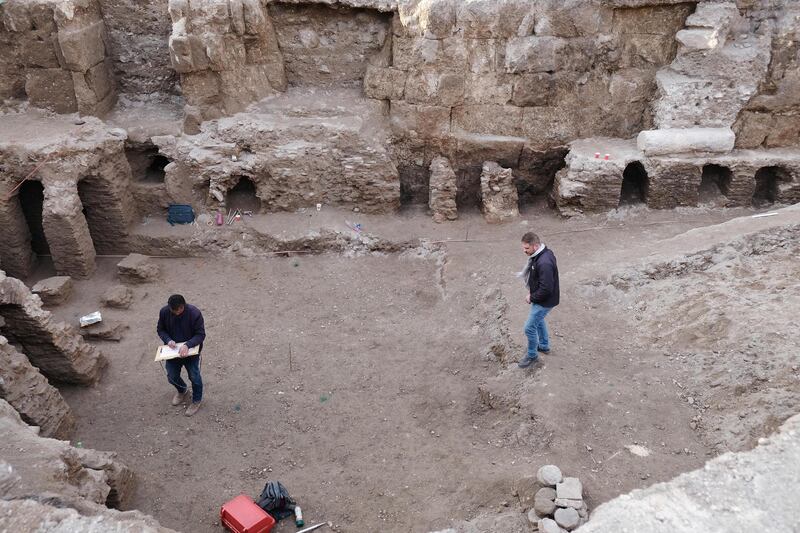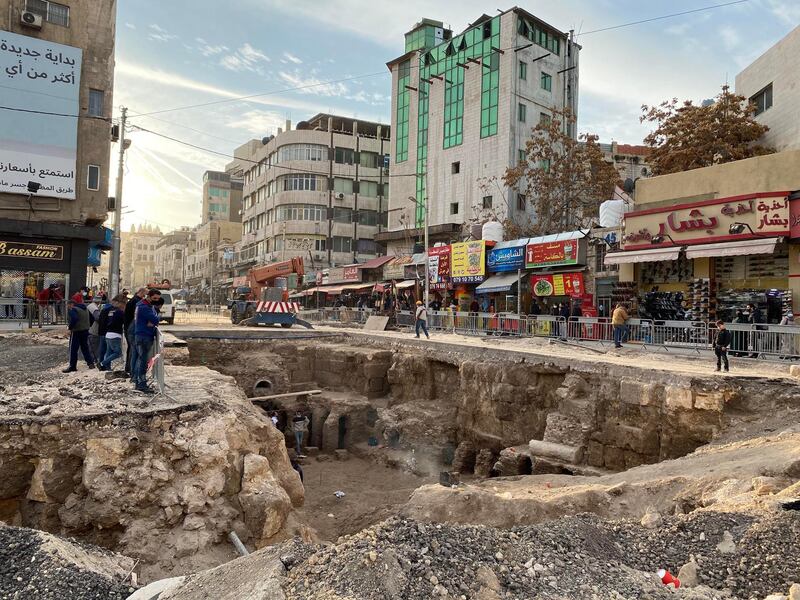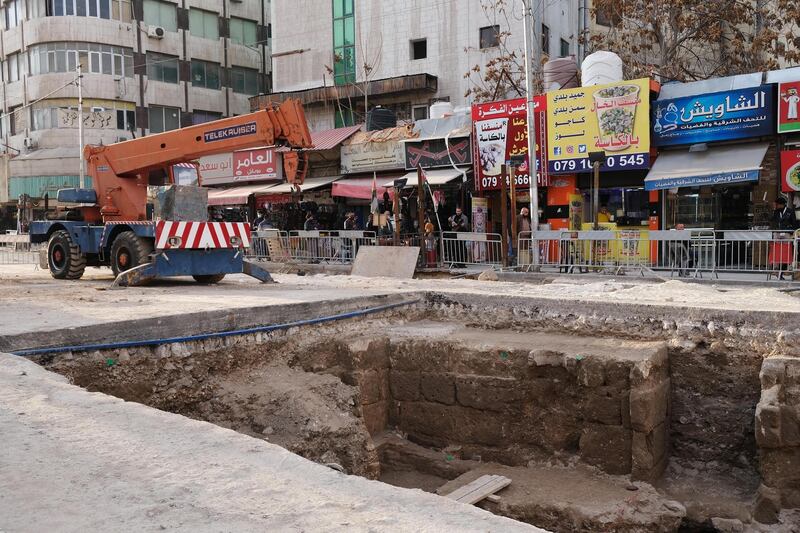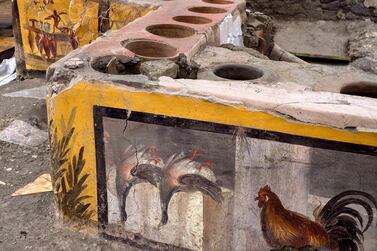A controversy over Roman baths accidentally found last month under a busy street in downtown Amman has ended with the decision to pile earth back on the 2,300-year-old site.
The authorities also stopped infrastructure work that could have further damaged the site, believed to be as significant as Beirut’s landmark Roman baths.
Two Jordanian archaeology officials told The National that they hope for the solution to be temporary until there is money to excavate the baths.
"These are coronavirus times and there is no funding," one of the officials said.
He said sand with high silica content would be poured on the partly uncovered site next week.
The special sand “will engulf the site” and make it relatively easy to unearth it again, even with the street back on top, he said.
Antiquities Department employees were seen last week inside the big hole, where a section of the baths lay underneath an old concrete drain pipe.
They were taking what they said were final pictures of the site and using survey instruments.
A few metres away they were being impatiently watched by an Amman municipality crew who were laying new, and larger, pipes.
Contract workers stumbled upon the 2,300-year-old baths last month while installing the underground pipes on behalf of the municipality.
Antiquities officials said the site could significantly boost the city’s Roman attractions, consisting mainly of an amphitheater next to the baths, and the Temple of Hercules on a hill overlooking both.
But the baths are a contentious issue between the powerful Amman municipality and government archaeologists, who say parts of the site may have been already damaged by a commercial building laid over it since the 1960s.
In Beirut, a large Roman bath with a terracotta disc heating system has been a landmark since it was discovered in the 1960s and renovated in the 1990s.
But Solidere, the company that rebuilt the centre of Beirut after the 1975-1990 civil war, was criticised for bulldozing other important ruins in the area. The company was partly owned by late Lebanese statesman Rafik Hariri.
Amman has a population of four million and the municipality has made it clear that priority should be given to repairing dilapidated infrastructure downtown, which sits on top of a Roman-era layer.
But on Thursday the municipality said it decided to halt work on the drainage project.
The project started four months ago and it would have penetrated an unexcavated 300-metre-long section of the baths site had it continued.
Pottery fragments were found at the site and at least one headless marble statue of what appears to be a Roman noble. The findings indicated that the baths were built in the 2nd to 3rd century BC.
Nearby are rows of clothes shops selling Chinese and Turkish apparel. There are also souvenir shops, coffee stands, sweet shops and restaurants.
Several shop owners said street drainage was needed to prevent flooding and that the delay caused by the discovery of the baths added to their losses. Owners said cars could no longer park in the area after closure of the main street.
But they wanted action to be taken to excavate the baths and preserve them, turning the site into a major destination.
Aziz Odeh, owner of one of the clothes shops, said expectations were low that the authorities would have gone in that direction, with the economy in recession amid the coronavirus.
He said that had the archaeological excavations continued “it would have been better for everyone in the long-term”.

